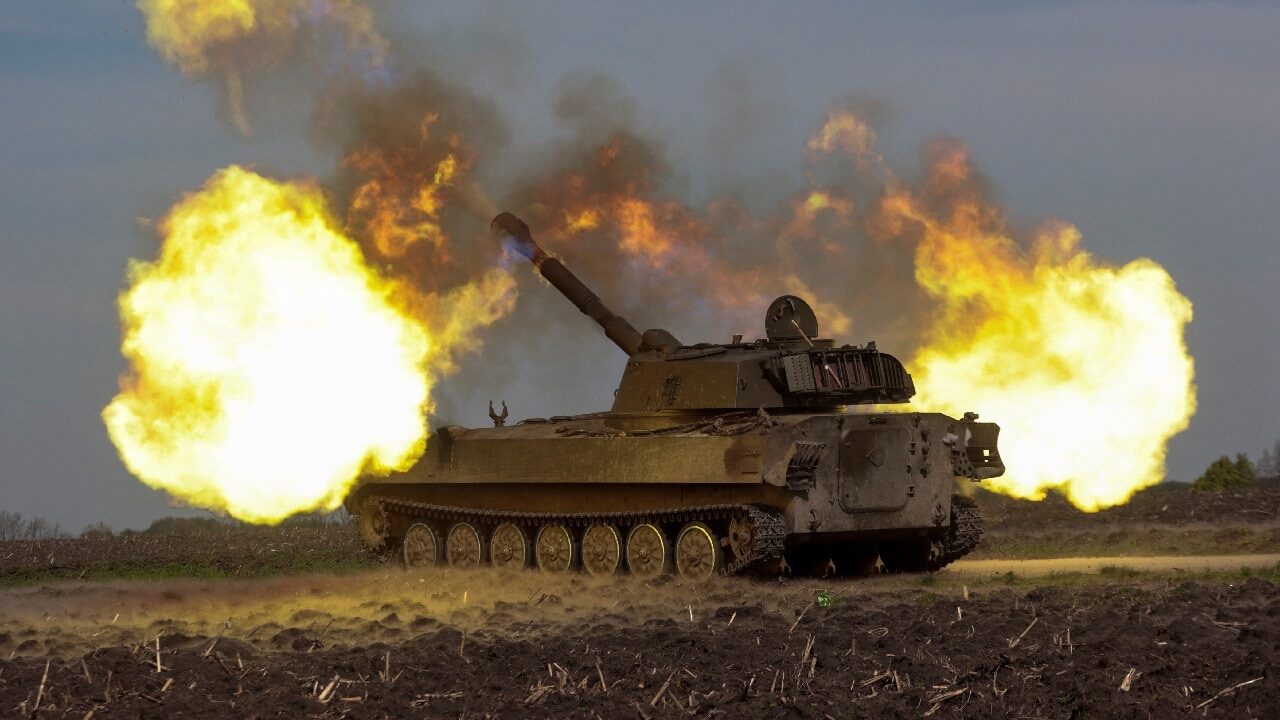On day 79 of the Russian invasion of Ukraine, the Russian military continues to fail in eastern Ukraine. Despite their renewed offensive, Russian forces have failed to reach the breakthrough the Kremlin has been so desperately looking for.
Kharkiv and Donbas
In its assessment of the war, the Institute for the Study of War focused on the Russian failures around Kharkiv and the wider impact their retreat from the second-largest city in Ukraine might have on their operations further south in the Donbas.
“Russian forces made marginal gains to the north of Severodonetsk and have likely captured Rubizhne and Voevodivka. Russian forces fired intensively on Ukrainian positions in northern Kharkiv to stop the ongoing Ukrainian counteroffensive around Kharkiv City. The artillery focus on Ukrainian positions has likely diverted the Russian artillery that remains in range of Kharkiv to the more urgent task of stopping the Ukrainian advance,” the Institute for the Study of War assessed.
Meanwhile, there is a bitter struggle going on for Snake Island in the Black Sea. Despite suffering heavy losses in the past few days, the Russian military persists in its intentions to occupy the small patch of land. The Ukrainian Air Force has used Su-27 Flanker fighter jets and Bayraktar TB2 tactical unmanned aerial systems to harass the Russian garrison and deny its resupply in the last few days.
“Russian forces are strengthening their position on Snake Island in an effort to block Ukrainian maritime communications and capabilities in the northwestern Black Sea on the approaches to Odesa,” the Institute for the Study of War assessed.
Meanwhile, the situation in Mariupol remains the same as the Russian military is using aerial strikes and long-range fires to destroy the last Ukrainian positions in the vast Azovstal steelworks plant. The Russian military has mounted ground assaults on the Ukrainian fortifications with approximately two battalion tactical groups or around 2,000 troops.
The Ukrainian Ministry of Defense claimed that as of Friday, Ukrainian forces have killed approximately 26,900 Russian troops (and wounded approximately thrice that number), destroyed 200 fighter, attack, and transport jets, 162 helicopters, 1,205 tanks, 542 artillery pieces, 2,900 armored personnel carriers, 193 Multiple Launch Rocket Systems (MLRS), 13 boats and cutters, 2,042 vehicles and fuel tanks, 88 anti-aircraft batteries, 405 unmanned aerial systems, 41 special equipment platforms, such as bridging vehicles, and four mobile Iskander ballistic missile systems, and 95 cruise missiles shot down by the Ukrainian air defenses.
The Arms Evolution in Ukraine
Dozens of countries have sent Ukraine billions worth of weapon systems. These arms—combined with the Ukrainian determination to fight for their country—have been key in stopping the Russian advance and pushing the Russian forces back on several fronts. But supplying Ukraine with weapons is an ever-evolving process, the British Minister of Defence Ben Wallace said.
“What we have started doing is effectively shifting from hardware to software in so far as training. When we started this, and the United Kingdom and the United States were providing military, both lethal and non-lethal types, into to Ukraine before the invasion. But they were predominantly [FGM-148] Javelins and, for us, NLAWs [Next Generation Light Anti-tank Weapon], short-range, anti-tank, sort of infantry-level capabilities. And they were pretty much, point and fire—they weren’t particularly complex weapon systems to use,” Wallace said.
Now that the Ukrainian military has been counterattacking, they need more advanced weapons, which presents different challenges.
“As the international community has decided to step up support, so now we have long range artillery—155 [mm] or 152 [mm], which is the existing Soviet-type caliber—it is a different weapon system. There need to be more specialists. And so, to allow it to be used properly and to be used on the right target. You need to make sure that people are trained. So, actually, the next step is training. To make sure that the Ukrainians don’t have just complex weapons, they need to able to operate them properly. . . I think that is the next big push—coordinating training to make sure that all that weaponry that has been gifted or sold to the Ukrainians is used properly to allow them to defend their nation,” the British Minister of Defense said.
1945’s New Defense and National Security Columnist, Stavros Atlamazoglou is a seasoned defense journalist specializing in special operations, a Hellenic Army veteran (national service with the 575th Marine Battalion and Army HQ), and a Johns Hopkins University graduate. His work has been featured in Business Insider, Sandboxx, and SOFREP.

